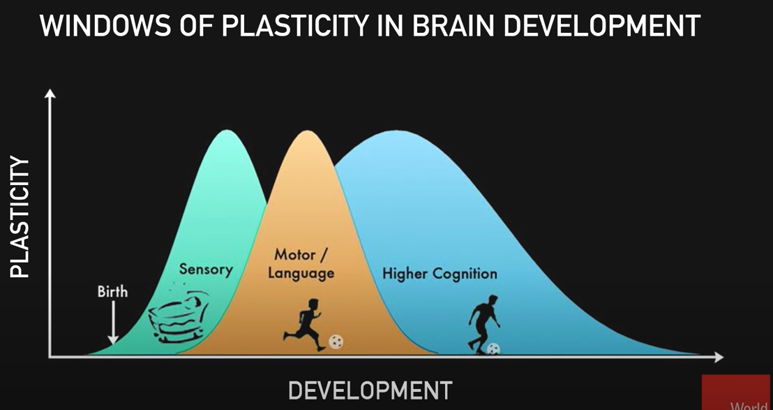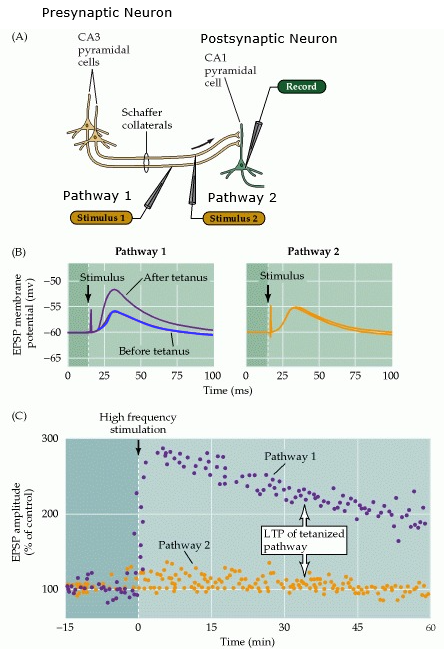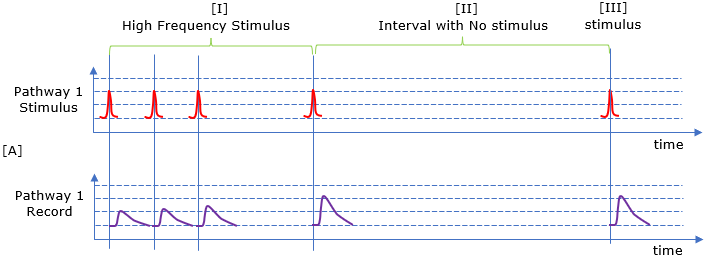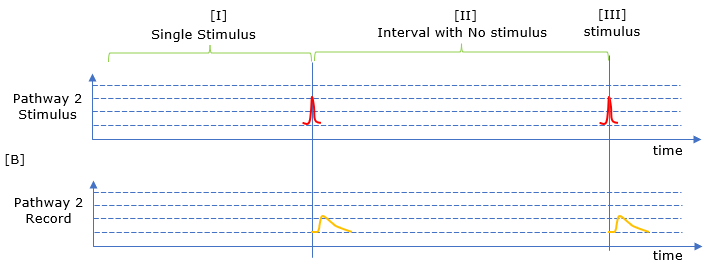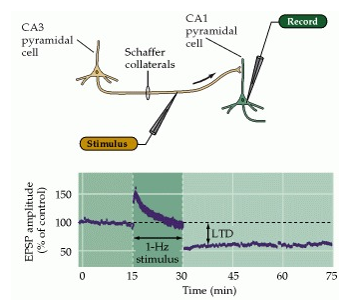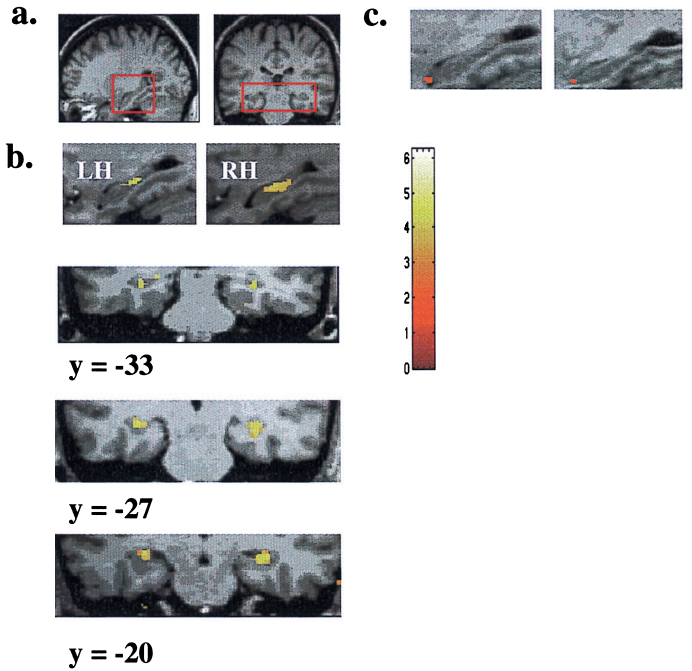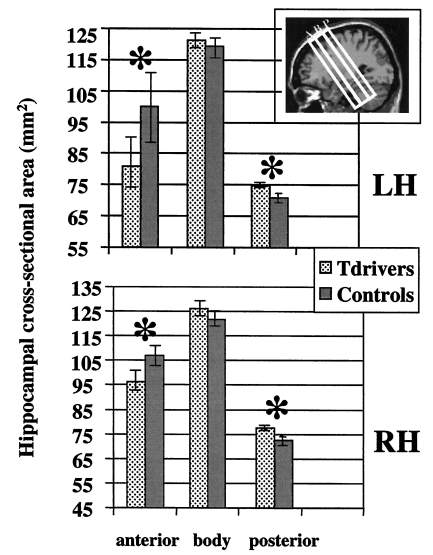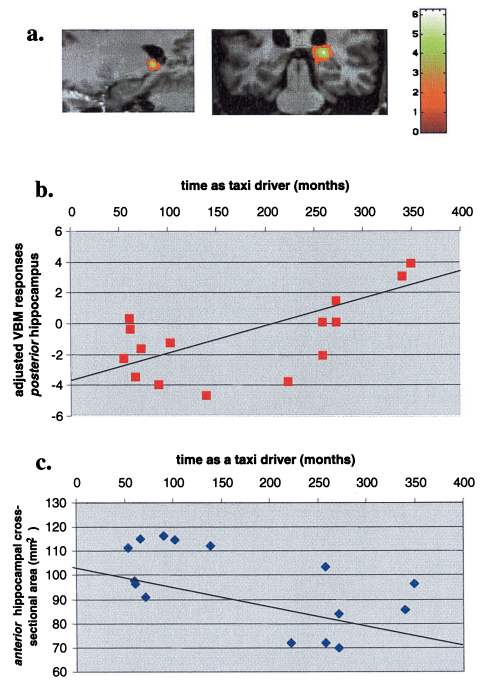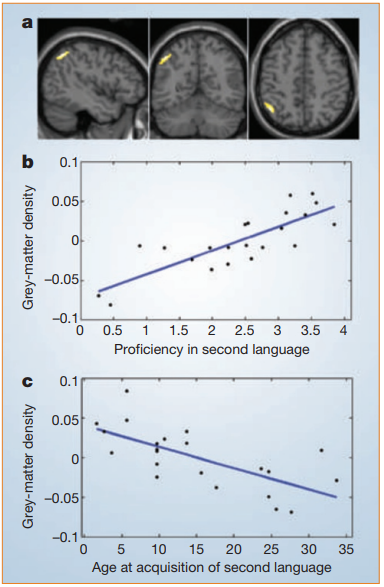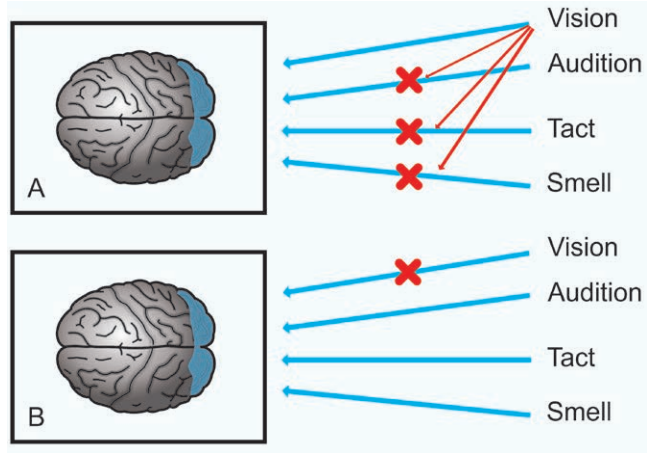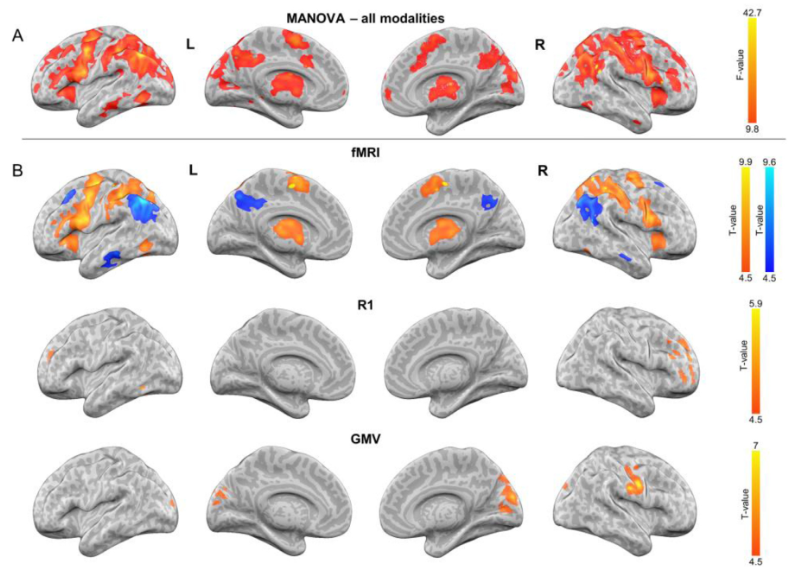|
|
||
|
I think you know of the meaning of 'Neuro' in this word. Then, what does 'placiticity' mean ? Following is definitions of 'placiticity' from a few web dictionaries.
Extending this definition of 'placiticity' to the term 'neuroplaciticity', you may come up with your own definition for the term. Among the many different definition I can google, following seems to be one of the best described one to me. It is the definition from Britanica written as below. Neuroplaciticity is the capacity of neurons and neural networks in the brain to change their connections and behaviour in response to new information, sensory stimulation, development, damage, or dysfunction. Even without this kind of formal/dry definition, if you think of 'plastic' comparing to the hard materials like rocks, steel etc, you may have some intuition poping up in your mind, that intuition (whatever it is) would be the right definition. Neuroplacity is the process or capability by which a neuron or a circuit of neuron 'changes' to perform various functions. This placiticity can be considered at various different levels. Sometimes it would indicates a specific part within single neuron (e.g, change of the numbers or forms of synapses), sometimes it may indicates the certain neural pathways which are involving huge amount of neurons and other supporting cells. In early days of neuroscience research, we thought that our nerveous system gets fixed once we passed a certain developmental phase (i.e, a certain age in our life) but with recent researches we have been getting more and more evidence that our nerveous system is not that solid / fixed system and it continue to change to create new functions (e.g, learn new things and skills) and in some cases it changes its pathways to compensate the regions that had been damaged.
Lifetime plan for developmentBefore I dive into the details of Neuroplaciticity, I want to introduce you an interesting plot that I got from a World Science Festival YouTube video.
Image Source : The Nuts and Bolts of Better Brains: Harnessing the Power of Neuroplasticity - World Science Festival As implied in the plot, there are a few points to note
Good News and Bad NewsThis is to set a proper expectation about the neurotransmitter. I don't like you to have too much expectation or too much disappointment, There is both good news and bad news about the neuroplaciticity. When I was learning about nervous system (almost 40 years ago/1980s), it was generally believed that nervous system (especially the nervous system in higher animal) stops development only upto a certain age. So if you have any damages in nervous system after a specific age, it can never be recovered. However more and more researches shows that it is not the case. Those research shows that the nerve system development is an ongoing process spanning almost whole period of our life and can heal many types of the damages in various different ways. This is obviously a Good News. However, you'd better not expect too much about this capability. The new development of nervous system does not work for every regions of nervous system. There are some part or functions of the nervous system that cannot be recovered once it get damaged. This is a bad news (at least not a good news). In addition, the capability of neuroplaciticity varies (usually get weaker) as we ages. This is definitely a bad news for the aging people including me. How neuroplaticity works ?Now let's look into the details of how neuroplaciticiy works (i.e, the mechanism of neuroplaciticity). Roughly speaking the neuroplaciticity happens at the two different level, structural and functional level. However, the border line between function and structural placiticity is not always clear cut. For example, if a neuroplacity happens by enhancing the synaptic connectibity between presynapse and post synapse and this enhancement happens by putting more neurotransmitter receptors on the cell membrane of the postsynaptic neuron, would you call this as a functional level placiticity ? or structural level placiticity ? You may call it as structural level placiticity if you observe cell membrane structure, but you may call it as functional level placiticity if you just observe electrical relationship between presynapse and post synapse without looking into the micro structural changes. So you may see a little bit of different categorization of functional and structural placiticiy depending on which text / articles you read. Regardless of whether you call it as structural or functional, I would suggest you to get familiar with basic terminology for individual mechanism. I think Long Term Potentiation, Long Term Depression and Synaptic Pruning would be what you may hear or read from almost every text or videos/lectures dealing with neuroplaciticity. Long Term Potentiation (LTP)Long Term Potentiation is a phenomena where a synaptic response gets higher than regular cases when the same synapse is stimulated repeatedly. This is considered as the most fundamental phenomena for synaptic placiticity. It is often interprested as the first step for momory formation. There are so many researches and evidences showing LTP and now would be one of the best established facts about synaptic placiticy (especially related to memory formation). One of the research/evidence is shown below. This experiment is done with neurons in Hipocampus.
Image Source : Long-Term Synaptic Potentiation [A] shows the illustration of test setup. You see the two pathways : Pathway 1 and Pathay 2. In these pathways, two different neuronal axons are stimulated by stimulus electrode : Stimulus 1 and Stimuls 2. The researcher used the two pathways for the comparative purpose. Pathway 1 shows long term potentiation and Pathway 2 does not. Before the measurement shown in the graph, the presynaptic neuron in Pathway 1 was stimulated multiple times (a high frequency sequence of stimulus pulse from Stimulus 1 electrode) and the presynaptic neuron in Pathway 2 was not stimulated. [B] Shows the comparative plots measured at 'Record' electrode (post synaptic cell) when the same size of stimulus is applied by stimulus 1 and stimulus 2. As you may notice, The response for Pathway 1 (the pathway stimulated before the test) is much stronger than the case of Pathway 2 (the pathway with no previous stimulus). Following is the my own illustration of LTP. I hope this would better illustrate the concept. < Synaptic response with LTP >
< Synaptic response with NO LTP >
NOTE : This video shows very clearly on how LTP is tested and measured : What Memories Are Made Of
There are many other examples of neuronal pathways showing LTP. As you may notice, most of them are from Hippocampus (CA), Sensory system (visual and auditory system). This is from a paper in 2004 and I am pretty sure that much more diverse cases has been researched by now.
< Pathways support LTP > : The source of this list is [ Long-Term Potentiation and Memory - PHYSIOLOGICAL REVIEWS - 2004]
Long Term Depression (LTD)Long Term Depression is a kind of opposite concept of LTP explained in previous section. In the synapse showing LTD, if you apply a sequence of stimulus at a presynaptic neuron, the potential measured at the post synpatic cell get smaller as shown in the following plot.
The potential shown in 0~15 min indicates the reference potential measured at the 'record' electrode. The range shows the meaured potential when a sequence of consecutive stimulus (once per second). As you see, the response is gradually decreases. And the with a brief break, stimulus is applied and the measured reponse (measured voltage) gets much lower than normal as shown in the range from 30 and later. Following is my own representation of the concept of LDP. I hope this would be easier for me to understand.
Denervation supersensitivityAs you may notice from the terminology, it is about the fact that some neuron get supersensitive (to the same input signal). Why do they become supersensitive ? It happens when some of corticol neurons are lost. Due to this neuron loss, a signal path to which the lost neuro used to belong gets disconnected(i.e, denervated). In order to compensate this, the post-synaptic membrane develop more receptors for neurotransmitters leading to super sensitivity for the post synaptic neuron (refer to this article).
Synaptic StrengtheningSynaptic strength is an indicator showing how strong potential (voltage or current) at post synaptic neuron when a stimulus is applied to the presynaptic neuron. You may take it as the ratio of output to input. For example, in LTP you can say the synaptic strength got increased and in LTD you can say the synaptic strength got decreased. Synaptic Strengthening is any mechanism (or structural change) that increase the synaptic strength. Synaptic PruningIn gardening (horticulture), pruning means cutting off (trimming) unused/not-useful branches. Same applies to Synaptic Pruning. Synaptic Pruning means removing synapses which are not used. This usually observed in some part of mammalian brain during the early stage of brain development. As shown in the image below, the number of synapsis continuosly increases from embryonic stages through a certain ages. But from a certain ages, only those synapsis which recieves stimulus remains and others (non-used) synapses gets removed (i.e, gets pruned).
Image Source : Synaptic Formation - BioNinja
< Examples of Synaptic Pruning >Follwoings are some of the examples of synaptic prunning.
< Medical conditions associated with Pruning >There some medical conditions associated with unusual level of synaptic pruning. Followings are some of the examples even though most of these conditions and its association with synaptic prunning is at still early stages of research. Brains of individuals with schizophrenia, for example, have fewer synapses than normal. Some researchers have hypothesized that excess synaptic pruning could trigger the diseaselikely during the active period of synapse elimination in adolescence, which coincides with the typical onset of schizophrenia.(How synaptic pruning shapes neural wiring during development and, possibly, in disease). Note : Even though over pruning is observed in cortex of the brain of schizophrenia, some research shows that a specific part of hippocampus shows more dendritic spikes in schizonphrenia patient than control group (Discovering Neurobiology for Psychosis) Note : Under-pruning may imply that higher connectivity. But this can be observed differently (in some case observed contradictory) based on various factors like 'local vs global' brain region or developmental stages etc (Network Neuroscience of Autism) Adult neurogenesisNeurogenesis is a process of generating new functional neurons from precursor cells. So 'Adult Neurogenesis' is a processing of generating new functional neurons from 'adult' precursor cells. Why 'Adult Neurogensis' is so sopecial ? It is because it had long been thought that this kinds of neurogenesis happens only in emborionic or prenatal stages in higher animal like mammalian. But recent study shows that this kind of neurogenesis happens throughout the whole life in some restricted area of nervous system (Note the keyword 'restricted area' meaning that unfortunately not every area of nervous system can undergo neurogenesis when it reaches a certain point in life). Since the first evidence of adult neurogenesis in Hippocampus of a rat brain, many other cases of adult neurogenesis was observed among various animals (refer to this paper) EquipotentialityEquipotentiality is a capacity of neural system in which normal functioning part (intact part) of the system to carry out the functionality of a damaged part to make the overall neural system function as normal. This theory was postulated at early memory research. Some scientists make small lesions on various locations of brain (rat brain) and check if the lesion cause any memory loss. The result showed that those small lesions (damages) does not cause any visible problems wherever you make unless the amount of the legion (damage) reaches considerably large area. This result lead to a few hypothesis as follows.
I want to introduce a little bit different way of defining Equipotentiality which is defined in What is Neuroplasticity? A Simplified Guide as follows : (I personally like this definition since it fits better for the term 'equal' in the term equipotentiality. VicariationVicariation sounds mouthfull to me and I have no idea on what it would literally mean. Even googling I haven't find any definition that sounds clear to me. One of the definition that I think is best fit for me is : Still not so clear to me. In other words, Vacriation refers to the process by which one brain area or system can compensate for the loss or damage of another brain area or system. I think it would be clearer if I see some cases of examples as listed below. I got these examples from chatGPT.
DiaschisisDiaschisis refers to a temporary decrease in function of a particular brain region as a result of damage or injury to a connected area. As mentioned, Diaschisis is usually temporary symptom and it gradually recover to normal in most cases. For now, exact mechanism behind Diachisis is largely in mystery and require further researches, it is believed that synaptic changes or neurotransmitters are involved in this symptom. There are some examples of Diaschsis as follows.
Nature of NeuroplacitityHow plasticity varies on AgeIn general, neuroplaciticity occurs more actively in young ages, especially within a few years after the birth. Neuroplaciticy continues in life timeEven though neuroplaciticiy happens more actively in young ages in general, it happens throughout the whole life. Especially the neurons involved in learning, experience, and memory formation would happen relatively actively even in adult ages. In some cases when a part of brain is damaged (e.g, stroke), healthy part of the brain would take over the functionality of the damaged part. Neuroplaciticy is NOT the cure for allEven though Neuroplaciticy is ongoing process throughout lifetime and some of damaged part can be compensated by some other part of the brain, it is important to know that neuroplaciticity is not a solution for every problem. You should consider the possible restriction of neuroplaciticity as follows :
Examples of NeuroplaciticityThere has been wide range of researchs about neuroplaciticy. In this section, I want to introduce some of the most popular (widely mentioned in many lectures) examples of these researches. Structural changes in Hippocampi of Taxi DriverThis would be an example that are most frequently mentioned in lectures and videos as an evidence showing that neuroplaciticity really happens. It is about the research from London Taxi driver. Comparing to other jobs, Taxi driver would use more of the brain parts that are associated with figuring out geographical maps and memories about those facts. The conclusion of this research can be summarized as below : (If you are interested in further details, check out the original paper linked at the bottom of the image).
The subjects in this research are as follows. One thing you may notice is that all of them are adults with a few years of experience as a taxi driver. This would be a good indicator that the placiticity happens even during the adulthood
The brain image evidence showing that the taxi driver shows higher development in a specific area of Hippocampus is as follows.
Following plot shows the volumn changes of three different parts of Hippocampus of taxi drivers. It can be summarized as below :
Following plot shows the correlation between the volum increase of posterior Hippocampus and the length of experience month of tax drivers. The conclusion is that the volum of posterial Hippocampus increases over time whereas the anterial Hippocampus volume decreases over time.
Image Source : Navigation-related structural change in the hippocampi of taxi drivers - PNAS (2000) Second Language AquisitionFirst language acquisition (learning the mother tungue) is intrinsic part of the brain and the development for this would be done for almost everybody, but the second langauge aquision is mostly done by active learning. The pioneering research on this area was published in Nature in 2004 as stated below : NOTE : Grey matter is the part formed by bundles of cell body parts of neurons. High density of Grey matter would imply the more number of cell body or more synaptic connections among neurons.
Image Source : Structural plasticity in the bilingual brain - Nature (2004) [a] shows the location of brain area that shows the increased grey matter density from the aquision of the second language. [b] shows the relationship between the preficiency in second language and Gray matter density. You would notice that the grey matter density increases as the proficiency of the second languate (i.e, gray matter density is proportional to the proficiency in the second language) [c] shows the relationship between the age at the acquisition of the second language and Gray matter density. You would notice that the earliear you learn the second language, the higher grey matter density is (i.e, gray matter density is anti-proportional to the the age at the aquision of the second language) Compenstation of Visual ImpairmentThis paper shows the case of neuroplaciticity where visual cortex area of those persons who has vision imparment. In these patient, the visual cortex would not process visual information/stimulus since they are visually impaired. Then the area for the visual cortex remain unused at all for those patients ? According to this review paper, the area of visual cortex still active but it mainly used for processing other sensory inputs instead of processing visual input. Following image shows how the visual cortex are of the visually impared person are utilized for other purpose. Pay attention to color code when you compare each of the image (A,B,C). [A] shows the cortex area for visual processing in Healthy person. [B] shows the area that are involved in language comprehension and semantic processed. [C] shows the cortex functionality in Visually Impaired person. You would notice that large prtions of visual cortex is replaced by green and blue colors indicating language comprehension and semantic processes and the yellow/orange are shrinked greatly.
Image Source : Neuroplasticity in visual impairments - Neurology International (2018) Following image shows another aspect of how the visual cortex of the visually impared person are utilized for other purpose. [A] shows the case of visual cortex development in healthy indivisual. At the birth, the visual cortex would have synapsis not only for Vision processing but also for processing other inputs like hearing (audition), touch (Tact) and Smell (olfactory). Of course, the vision processing is main functionality of this cortex area but there are some of synapsis associated other functionality (e.g, hearing, touch, smell etc). As the individual experience various visual inputs after birth, synapsis for hearing / touch / smell gets inhibited and eventually get removed. [B] shows the case of visual cortex development (placiticity) for the indivisuals with visual imparement. Since these individual does not get any visual stimulus, the synapses for vision processing would get degenerated (removed) and the remaining functionality (like hearing, touching, smell etc) would get more developed. Since the indivisuals with the impairment from the birth has more of the synapses for hearing, touching, smell comparing to the individual with the impairment at later age, the indivisuals with the imparment from the birth shows stronger placiticity (i.e, developing other functionality at the visual cortex) comparing to the other cases.
Image Source : Neuroplasticity in visual impairments - Neurology International (2018) Some of the bullets that would give you a little bit further details from this papar are listed below :
Brain Changes with Braille LearningThis case investigates neuroplastic changes in sighted adults during an 8-month tactile Braille reading course. The study monitored brain structure and function at five different time points using MRI techniques. Key findings include adaptations in the reading network of the ventral occipitotemporal cortex to tactile input and changes in grey matter volume and intracortical myelin in sensory areas. These results contribute to understanding the neuroplastic mechanisms underlying complex cognitive systems and their sensory inputs and motor outputs.
Image Source : Brain plasticity dynamics during tactile Braille learning in sighted subjects: Multi-contrast MRI approach - NeuroImage (2021) Each type of scan provides different information about the brain. While fMRI is more about immediate functional changes, R1 and GMV provide insights into more structural and potentially long-term changes in the brain's anatomy. The difference in active areas between these scans underscores the multifaceted nature of brain plasticity, involving both functional and structural changes in different regions, depending on the type of learning and the sensory input involved.
Is any region or neural path more plastic than others ?Seemingly Yes, but the answer may vary depending on situations or how you define the placitity. I think I need to read more articles or papers to have clearer understanding on this topic, but following is general idea that I have as of now.
Is any region or neural path less plastic than others ?Seemingly Yes, but as in previous section the answer may vary depending on situations or how you define the placitity. I think I need to read more articles or papers to have clearer understanding on this topic, but following is general idea that I have as of now. It is considered that basal ganglia and primary auditary cortex is less plastic then others.
YouTube
Reference
PodCast
|
||
